- Home
- H. P. Lovecraft
The Shadow Out of Time
The Shadow Out of Time Read online
Table of Contents
Cover
The Book
The Author
Title
Copyright
The Shadow Out of Time
Chapter 1
Chapter 2
Chapter 3
Chapter 4
Chapter 5
Chapter 6
Chapter 7
Chapter 8
The Book
The Shadow Out of Time is a novella by American horror fiction writer H. P. Lovecraft. Written between November 1934 and February 1935, it was first published in the June 1936 issue of Astounding Stories.
The Shadow Out of Time indirectly tells of the Great Race of Yith, an extraterrestrial species with the ability to travel through space and time. The Yithians accomplish this by switching bodies with hosts from the intended spatial or temporal destination. The story implies that the effect, when seen from the outside, is similar to spiritual possession. The Yithians' original purpose was to study the history of various times and places, and they have amassed a "library city" that is filled with the past and future history of multiple races, including humans. Ultimately the Yithians use their ability to escape the destruction of their planet in another galaxy by switching bodies with a race of cone-shaped plant beings who lived 250 million years ago on Earth. The cone-shaped entities (subsequently also known as the Great Race of Yith) lived in their vast library city in what would later become Australia's Great Sandy Desert.
The story is told through the eyes of Nathaniel Wingate Peaslee, an American living in the first decade of the 20th century, who is "possessed" by a Yithian. He fears he is losing his mind when he unaccountably sees strange vistas of other worlds and of the Yithian library city. He also feels himself being led about by these creatures and experiences how they live. When he is returned to his own body, he finds that those around him have judged him insane due to the actions of the Yithian that possessed his body. While he was experiencing a Yithian existence in Earth's ancient past, the Yithian occupying his body was experiencing a human one in the present day.
The Author
Howard Phillips Lovecraft was born on August 20, 1890, in his family home at 194 (later 456) Angell Street in Providence, Rhode Island (the house was demolished in 1961). He was the only child of Winfield Scott Lovecraft (1853–1898), a traveling salesman of jewelry and precious metals, and Sarah Susan Phillips Lovecraft (1857–1921), who could trace her ancestry to the Massachusetts Bay Colony in 1631. Both of his parents were of entirely English ancestry, all of whom had been in New England since the colonial period. In 1893, when Lovecraft was three, his father became acutely psychotic and was placed in the Providence psychiatric institution, Butler Hospital, where he remained until his death in 1898. H. P. Lovecraft maintained throughout his life that his father had died in a condition of paralysis brought on by "nervous exhaustion." Although it has been suggested his father's mental illness may have been caused by syphilis, neither the younger Lovecraft nor his mother (who also died in Butler Hospital) seems to have shown signs of being infected with the disease.
After his father's hospitalization, Lovecraft was raised by his mother, his two maternal aunts (Lillian Delora Phillips and Annie Emeline Phillips), and his maternal grandfather, Whipple Van Buren Phillips, an American businessman. All five resided together in the family home. Lovecraft was a prodigy, reciting poetry at the age of three, and writing complete poems by six. His grandfather encouraged his reading, providing him with classics such as The Arabian Nights, Bulfinch's Age of Fable, and children's versions of the Iliad and the Odyssey. His grandfather also stirred the boy's interest in the weird by telling him his own original tales of Gothic horror.
Lovecraft was frequently ill as a child. Because of his sickly condition, he barely attended school until he was eight years old, and then was withdrawn after a year. He read voraciously during this period and became especially enamored of chemistry and astronomy. He produced several hectographed publications with a limited circulation, beginning in 1899 with The Scientific Gazette. Four years later, he returned to public school at Hope High School. Beginning in his early life, Lovecraft is believed to have suffered from sleep paralysis, a form of parasomnia; he believed himself to be assaulted at night by horrific "night gaunts". Much of his later work is thought to have been directly inspired by these terrors. (Indeed, "Night Gaunts" became the subject of a poem he wrote of the same name, in which they were personified as devil-like creatures without faces.)
His grandfather's death in 1904 greatly affected Lovecraft's life. Mismanagement of his grandfather's estate left his family in a poor financial situation, and they were forced to move into much smaller accommodations at 598 (now a duplex at 598–600) Angell Street. In 1908, prior to his high school graduation, he is said to have suffered what he later described as a "nervous breakdown", and consequently never received his high school diploma (although he maintained for most of his life that he did graduate). S. T. Joshi suggests in his biography of Lovecraft that a primary cause for this breakdown was his difficulty in higher mathematics, a subject he needed to master to become a professional astronomer.
The adult Lovecraft was gaunt with dark eyes set in a very pale face (he rarely went out before nightfall). For five years after leaving school, he lived an isolated existence with his mother, writing primarily poetry without seeking employment or new social contacts. This changed in 1913 when he wrote a letter to The Argosy, a pulp magazine, complaining about the insipidness of the love stories in the publication by writer Fred Jackson. The ensuing debate in the magazine's letters column caught the eye of Edward F. Daas, president of the United Amateur Press Association (UAPA), who invited Lovecraft to join the organization in 1914.
In April 1917, Lovecraft tried to join the National Guard, but did not pass the physical examination.
The UAPA reinvigorated Lovecraft and incited him to contribute many poems and essays; in 1916, his first published story, The Alchemist, appeared in the United Amateur Press Association. The earliest commercially published work came in 1922, when he was thirty-one. By this time he had begun to build what became a huge network of correspondents. His lengthy and frequent missives would make him one of the great letter writers of the century. Among his correspondents were Robert Bloch (Psycho), Clark Ashton Smith, and Robert E. Howard (Conan the Barbarian series). Many former aspiring authors later paid tribute to his mentoring and encouragement through the correspondence.
His oeuvre is sometimes seen as consisting of three periods: an early Edgar Allan Poe influence; followed by a Lord Dunsany–inspired Dream Cycle; and finally the Cthulhu Mythos stories. However, many distinctive ideas and entities present in the third period were introduced in the earlier works, such as the 1917 story "Dagon", and the threefold classification is partly overlapping.
In 1919, after suffering from hysteria and depression for a long period of time, Lovecraft's mother was committed to Butler Hospital - the mental institution where her husband had died. Nevertheless, she wrote frequent letters to Lovecraft, and they remained close until her death on May 24, 1921, the result of complications from gallbladder surgery.
A few days after his mother's death, Lovecraft attended a convention of amateur journalists in Boston, Massachusetts, where he met and became friendly with Sonia Greene, a widow and owner of a successful hat shop and seven years his senior. Lovecraft's aunts disapproved of the relationship. Lovecraft and Greene married on March 3, 1924, and relocated to her Brooklyn apartment; she thought he needed to get out of Providence in order to flourish and was willing to support him financially. Greene, who had been married before, later said Lovecraft had performed satisfactorily as a lover, though she had to take the initiative in all aspects
of the relationship. She attributed Lovecraft's passive nature to a stultifying upbringing by his mother. Lovecraft's weight increased to 90 kg (200 lb) on his wife's home cooking.
He was enthralled by New York, and, in what was informally dubbed the Kalem Club, he acquired a group of encouraging intellectual and literary friends who urged him to submit stories to Weird Tales; editor Edwin Baird accepted many otherworldly 'Dream Cycle' Lovecraft stories for the ailing publication, though they were heavily criticized by a section of the readership. Established informally some years before Lovecraft lived in New York, the core Kalem Club members were boys' adventure novelist Henry Everett McNeil; the lawyer and anarchist writer James Ferdinand Morton, Jr.; and the poet Reinhardt Kleiner. In 1925 these four regular attendees were joined by Lovecraft along with his protégé Frank Belknap Long, bookseller George Willard Kirk, and Lovecraft's close friend Samuel Loveman. Loveman was Jewish, but was unaware of Lovecraft's nativist attitudes. Conversely, it has been suggested Lovecraft, who disliked mention of sexual matters, was unaware that Loveman and some of his other friends were homosexual.
Not long after the marriage, Greene lost her business and her assets disappeared in a bank failure; she also became ill. Lovecraft made efforts to support his wife through regular jobs, but his lack of previous work experience meant he lacked proven marketable skills. After a few unsuccessful spells as a low level clerk, his job-seeking became desultory. The publisher of Weird Tales attempted to put the loss-making magazine on a business footing and offered the job of editor to Lovecraft, who declined, citing his reluctance to relocate to Chicago; "think of the tragedy of such a move for an aged antiquarian," the 34-year-old writer declared. Baird was replaced with Farnsworth Wright, whose writing Lovecraft had criticized. Lovecraft's submissions were often rejected by Wright. (This may have been partially due to censorship guidelines imposed in the aftermath of a Weird Tales story that hinted at necrophilia, although after Lovecraft's death Wright accepted many of the stories he had originally rejected.)
Greene, moving where the work was, relocated to Cincinnati, and then to Cleveland; her employment required constant travel. Added to the daunting reality of failure in a city with a large immigrant population, Lovecraft's single room apartment in the run down area of Red Hook was burgled, leaving him with only the clothes he was wearing. In August 1925 he wrote "The Horror at Red Hook" and "He", in the latter of which the narrator says "My coming to New York had been a mistake; for whereas I had looked for poignant wonder and inspiration ... I had found instead only a sense of horror and oppression which threatened to master, paralyze, and annihilate me". It was at around this time he wrote the outline for "The Call of Cthulhu" with its theme of the insignificance of all humanity. In the bibliographical study H. P. Lovecraft: Against the World, Against Life, Michel Houellebecq suggested that the misfortunes fed Lovecraft's central motivation as a writer, which he said was racial resentment. With a weekly allowance Greene sent, Lovecraft moved to a working class area of Brooklyn Heights where he subsisted in a tiny apartment. He had lost 40 pounds (18 kg) of bodyweight by 1926, when he left for Providence.
Back in Providence, Lovecraft lived in a "spacious brown Victorian wooden house" at 10 Barnes Street until 1933. The same address is given as the home of Dr. Willett in Lovecraft's The Case of Charles Dexter Ward. The period beginning after his return to Providence—the last decade of his life—was Lovecraft's most prolific; in that time he produced short stories, as well as his longest work of fiction The Case of Charles Dexter Ward and At the Mountains of Madness. He frequently revised work for other authors and did a large amount of ghost-writing, including "The Mound", "Winged Death", "The Diary of Alonzo Typer". Client Harry Houdini was laudatory, and attempted to help Lovecraft by introducing him to the head of a newspaper syndicate. Plans for a further project were ended by Houdini's death.
Although he was able to combine his distinctive style (allusive and amorphous description by horrified though passive narrators) with the kind of stock content and action Weird Tales's editor wanted—Wright paid handsomely to snap up "The Dunwich Horror" which proved very popular with readers—Lovecraft increasingly produced work that brought him no remuneration. Affecting a calm indifference to the reception of his works, Lovecraft was in reality extremely sensitive to criticism and easily precipitated into withdrawal. He was known to give up trying to sell a story after it had been once rejected. Sometimes, as with The Shadow Over Innsmouth (which included a rousing chase that supplied action) he wrote a story that might have been commercially viable, but did not try to sell it. Lovecraft even ignored interested publishers. He failed to reply when one inquired about any novel Lovecraft might have ready: although he had completed such a work, The Case of Charles Dexter Ward, it was never typed up.
Throughout his life, selling stories and paid literary work for others did not provide enough to cover Lovecraft's basic expenses. Living frugally, he subsisted on an inheritance that was nearly depleted by the time of his last years. He sometimes went without food to afford the cost of mailing letters. Eventually, he was forced to move to smaller and meaner lodgings with his surviving aunt. He was also deeply affected by the suicide of his correspondent Robert E. Howard. In early 1937, Lovecraft was diagnosed with cancer of the small intestine, and suffered from malnutrition as a result. He lived in constant pain until his death on March 15, 1937, in Providence.
In accordance with his lifelong scientific curiosity, he kept a diary of his illness until close to the moment of his death.
Lovecraft was listed along with his parents on the Phillips family monument. That was not enough for his fans, who in 1977 raised the money to buy him a headstone of his own in Swan Point Cemetery, on which they had inscribed Lovecraft's name, the dates of his birth and death, and the phrase "I AM PROVIDENCE", a line from one of his personal letters.
Groups of enthusiasts annually observe the anniversaries of Lovecraft's death at Ladd Observatory and of his birth at his grave site. In July 2013, the Providence City Council designated the intersection of Angell and Prospect streets near the author's former residences as "H. P. Lovecraft Memorial Square" and installed a commemorative sign.
(source wikipedia.org)
H.P. Lovecraft
THE SHADOW
OUT OF TIME
Arcadia ebook 2016
Design and graphic: facilebook
www.facilebook.it
[email protected]
THE SHADOW
OUT OF TIME
Chapter 1
After twenty-two years of nightmare and terror, saved only by a desperate conviction of the mythical source of certain impressions, I am unwilling to vouch for the truth of that which I think I found in Western Australia on the night of 17–18 July 1935. There is reason to hope that my experience was wholly or partly an hallucination — for which, indeed, abundant causes existed. And yet, its realism was so hideous that I sometimes find hope impossible.
If the thing did happen, then man must be prepared to accept notions of the cosmos, and of his own place in the seething vortex of time, whose merest mention is paralysing. He must, too, be placed on guard against a specific, lurking peril which, though it will never engulf the whole race, may impose monstrous and unguessable horrors upon certain venturesome members of it.
It is for this latter reason that I urge, with all the force of my being, final abandonment of all the attempts at unearthing those fragments of unknown, primordial masonry which my expedition set out to investigate.
Assuming that I was sane and awake, my experience on that night was such as has befallen no man before. It was, moreover, a frightful confirmation of all I had sought to dismiss as myth and dream. Mercifully there is no proof, for in my fright I lost the awesome object which would — if real and brought out of that noxious abyss — have formed irrefutable evidence.
When I came upon the horror I was alone — and I have up to now told no one about it. I could not stop the others from digging in its direction
, but chance and the shifting sand have so far saved them from finding it. Now I must formulate some definite statement — not only for the sake of my own mental balance, but to warn such others as may read it seriously.
These pages — much in whose earlier parts will be familiar to close readers of the general and scientific press — are written in the cabin of the ship that is bringing me home. I shall give them to my son, Professor Wingate Peaslee of Miskatonic University — the only member of my family who stuck to me after my queer amnesia of long ago, and the man best informed on the inner facts of my case. Of all living persons, he is least likely to ridicule what I shall tell of that fateful night.
I did not enlighten him orally before sailing, because I think he had better have the revelation in written form. Reading and re-reading at leisure will leave with him a more convincing picture than my confused tongue could hope to convey.
He can do anything that he thinks best with this account — showing it, with suitable comment, in any quarters where it will be likely to accomplish good. It is for the sake of such readers as are unfamiliar with the earlier phases of my case that I am prefacing the revelation itself with a fairly ample summary of its background.
My name is Nathaniel Wingate Peaslee, and those who recall the newspaper tales of a generation back — or the letters and articles in psychological journals six or seven years ago — will know who and what I am. The press was filled with the details of my strange amnesia in 1908–13, and much was made of the traditions of horror, madness, and witchcraft which lurked behind the ancient Massachusetts town then and now forming my place of residence. Yet I would have it known that there is nothing whatever of the mad or sinister in my heredity and early life. This is a highly important fact in view of the shadow which fell so suddenly upon me from outside sources.

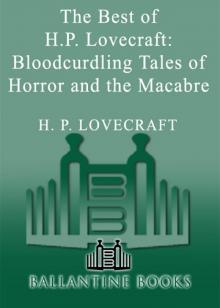 The Best of H.P. Lovecraft
The Best of H.P. Lovecraft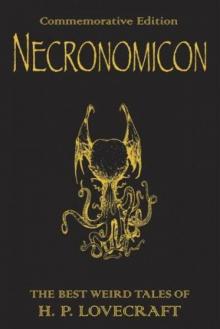 The Definitive H.P. Lovecraft: 67 Tales Of Horror In One Volume
The Definitive H.P. Lovecraft: 67 Tales Of Horror In One Volume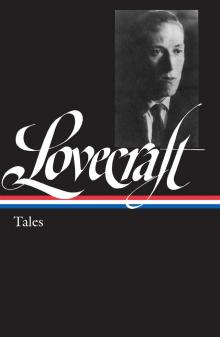 The Complete Works of H.P. Lovecraft
The Complete Works of H.P. Lovecraft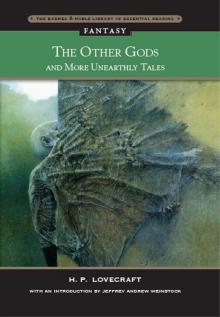 Other Gods and More Unearthly Tales
Other Gods and More Unearthly Tales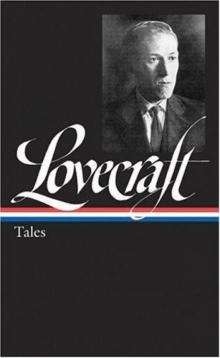 Lovecraft's Fiction Volume I, 1905-1925
Lovecraft's Fiction Volume I, 1905-1925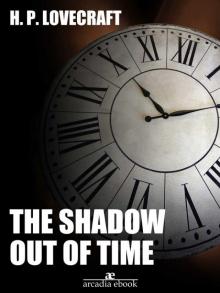 The Shadow Out of Time
The Shadow Out of Time The Shunned House
The Shunned House Lovecraft's Fiction Volume II, 1926-1928
Lovecraft's Fiction Volume II, 1926-1928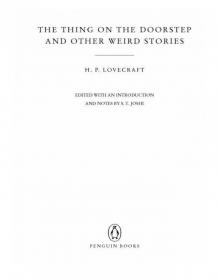 The Thing on the Doorstep and Other Weird Stories
The Thing on the Doorstep and Other Weird Stories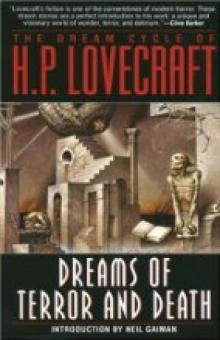 Dream Cycle of H. P. Lovecraft: Dreams of Terror and Death
Dream Cycle of H. P. Lovecraft: Dreams of Terror and Death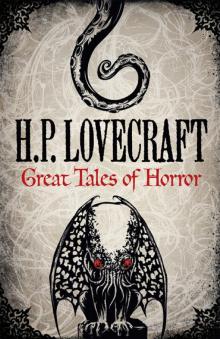 Great Tales of Horror
Great Tales of Horror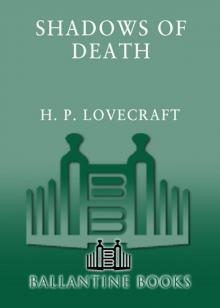 Shadows of Death
Shadows of Death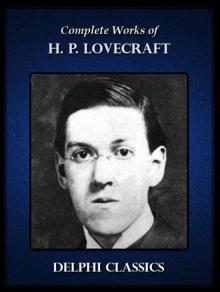 Delphi Complete Works of H. P. Lovecraft (Illustrated)
Delphi Complete Works of H. P. Lovecraft (Illustrated)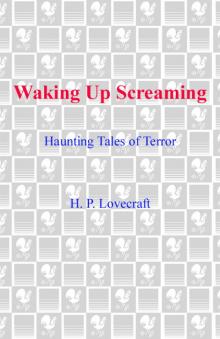 Waking Up Screaming: Haunting Tales of Terror
Waking Up Screaming: Haunting Tales of Terror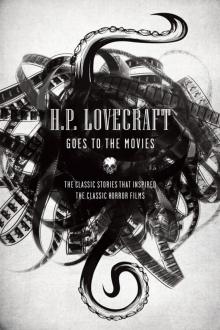 H.P. Lovecraft Goes to the Movies
H.P. Lovecraft Goes to the Movies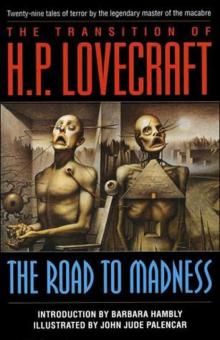 The Road to Madness
The Road to Madness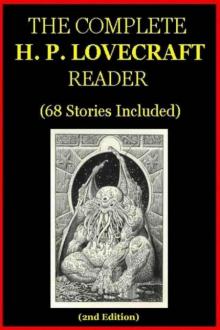 The Complete H.P. Lovecraft Reader (68 Stories)
The Complete H.P. Lovecraft Reader (68 Stories)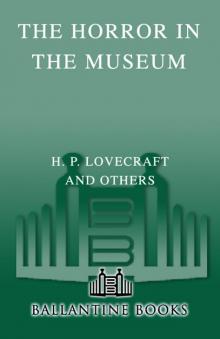 The Horror in the Museum
The Horror in the Museum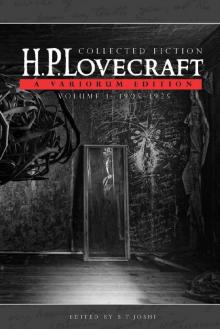 Collected Fiction Volume 1 (1905-1925): A Variorum Edition
Collected Fiction Volume 1 (1905-1925): A Variorum Edition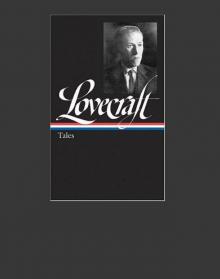 Lovecrafts_Fiction, vol.I_1905-1925
Lovecrafts_Fiction, vol.I_1905-1925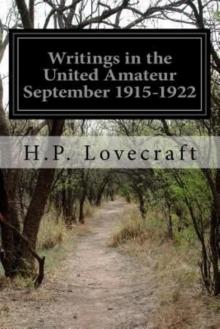 Writings in the United Amateur, 1915-1922
Writings in the United Amateur, 1915-1922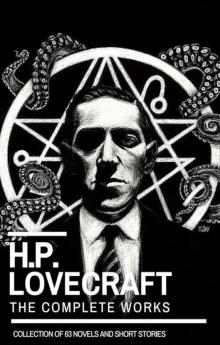 H.P. Lovecraft: The Complete Works
H.P. Lovecraft: The Complete Works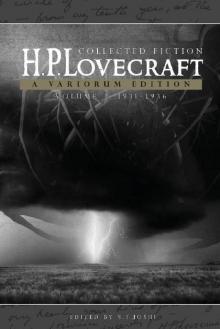 Collected Fiction Volume 3 (1931-1936): A Variorum Edition
Collected Fiction Volume 3 (1931-1936): A Variorum Edition H.P. Lovecraft: The Complete Fiction
H.P. Lovecraft: The Complete Fiction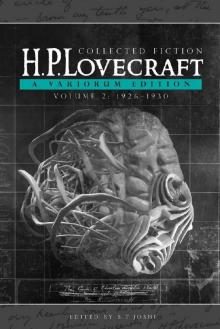 Collected Fiction Volume 2 (1926-1930): A Variorum Edition
Collected Fiction Volume 2 (1926-1930): A Variorum Edition Yog Sothothery - The Definitive H.P. Lovecraft Anthology
Yog Sothothery - The Definitive H.P. Lovecraft Anthology The Complete H.P. Lovecraft Collection (Xist Classics)
The Complete H.P. Lovecraft Collection (Xist Classics)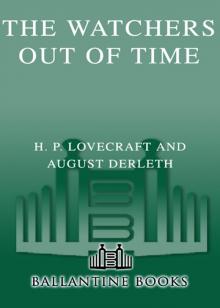 The Watchers Out of Time
The Watchers Out of Time Eldritch Tales
Eldritch Tales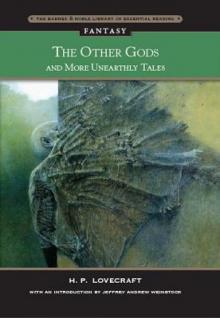 The Other Gods And More Unearthly Tales
The Other Gods And More Unearthly Tales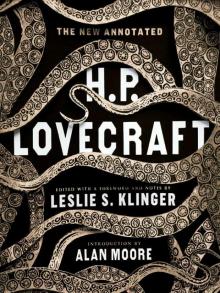 The New Annotated H. P. Lovecraft
The New Annotated H. P. Lovecraft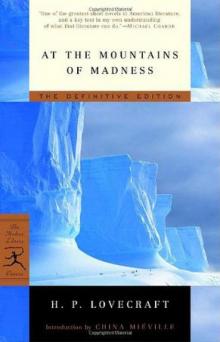 At the mountains of madness
At the mountains of madness Bloodcurdling Tales of Horror and the Macabre
Bloodcurdling Tales of Horror and the Macabre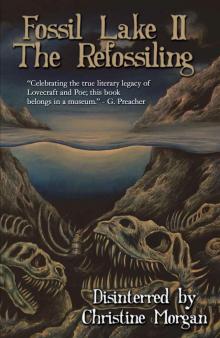 Fossil Lake II: The Refossiling
Fossil Lake II: The Refossiling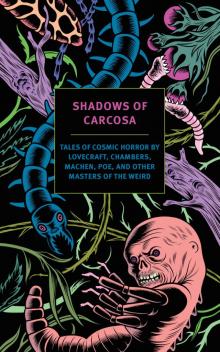 Shadows of Carcosa: Tales of Cosmic Horror by Lovecraft, Chambers, Machen, Poe, and Other Masters of the Weird
Shadows of Carcosa: Tales of Cosmic Horror by Lovecraft, Chambers, Machen, Poe, and Other Masters of the Weird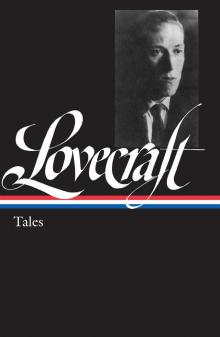 H. P. Lovecraft
H. P. Lovecraft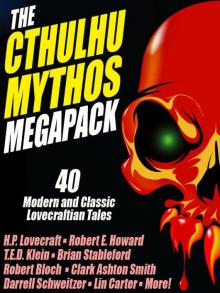 The Cthulhu Mythos Megapack
The Cthulhu Mythos Megapack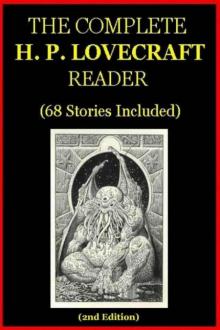 The Complete H. P. Lovecraft Reader (2nd Edition)
The Complete H. P. Lovecraft Reader (2nd Edition)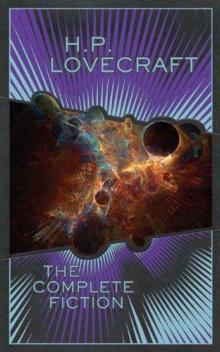 The Complete Fiction
The Complete Fiction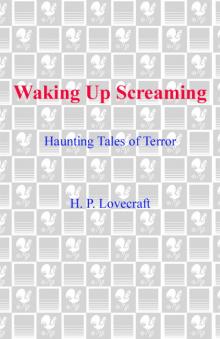 Waking Up Screaming
Waking Up Screaming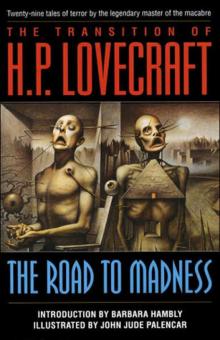 Transition of H. P. Lovecraft
Transition of H. P. Lovecraft![[1935] The Shadow Out of Time Read online](http://i1.bookreadfree.com/i2/04/12/1935_the_shadow_out_of_time_preview.jpg) [1935] The Shadow Out of Time
[1935] The Shadow Out of Time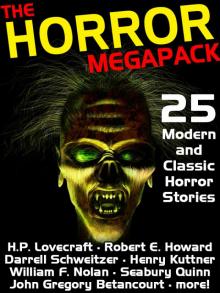 The Horror Megapack
The Horror Megapack